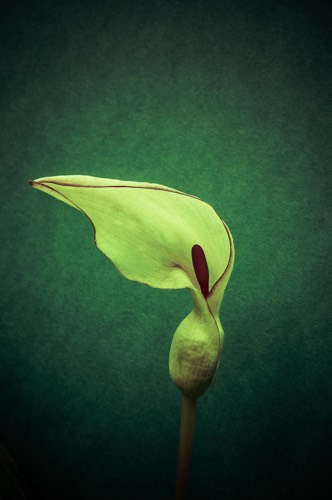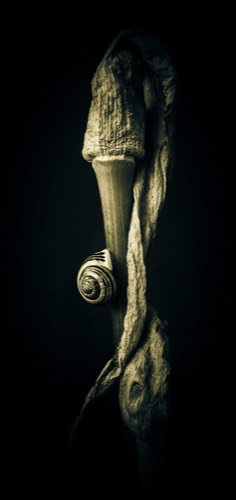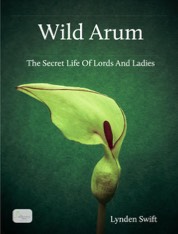A celebration in pictures and words of the most mysterious, intriguing and stylish plant you will ever meet.
By Lynden Swift.



“This crafty and malignant antediluvian vegetable” so said the Victorian scientists of 1899 when they believed that Arum had evolved its red berries to poison the birds that ate of them to become “huge manure heaps for the growth of the young plant”.
A crafty and malignant plant indeed.

Wild Arum: The Most Fascinating Plant on our Island.
Sex and Death. Serpents and Poison. Mythology and Fashion, Hibernating Bears and Saints.
Arum has it all.
Known as Cuckoo Pint, Stallions and Mares and Dog’s Dibble, amongst a host of other local names, Arum Maculatum has always stirred our imaginations. The unmistakable sexual suggestiveness carried in its curves has led to it being universally considered a powerful aphrodisiac. It is said to induce ‘insatiable sexual desire’ and has multiple orgasms as part of its reproduction. Reflecting this bawdy sexuality the plant has inspired over 150 common names in English alone: more than any other British plant.
The mythology of Arum is intertwined with our deepest drives and fears, from serpents and sexuality to death and the powers of creation. Our Victorian ancestors viewed it with such suspicion that they described it as that ‘crafty and malignant antediluvian vegetable’. It is included in the first ever encyclopaedia and the remedies of a Welsh healing family who say they were taught by the fairy folk. Legends tell of its power to rouse bears from hibernation and how its pollen glows at night giving it the name of ‘fairy lamps’.
To know the Wild Arum is to steep one’s self in the history of our ongoing relationship with plants, to delve into the very roots of herbalism and botany and to take in the grand view of the evolution of science and medicine. It is to go on a journey which begins in ancient Greece with the earliest herbal manuscripts ever written and a single book which was in continual use for over 1500 years. It ends with the latest research into the genetic evolution of plants. It is to step into the intimate relationship between powerful plants and our own evolution, taking in along the way the first herbal guides, much myth and folklore, Elizabethan high fashion, rampant plagiarism and hibernating bears. It’s quite a story.
It is a plant which has fired our imaginations down the centuries and which is still a potent symbol of the wild and mysterious side of nature.
Peter Boyce: International Aroid Society
Greg Ruckert: Arum Specialist.
Get the Wild Arum Book...
Containing over 100 stunning photographs showcasing this unique British plant, the Secret Life of Lords and Ladies explores the history, the mythology and the fascination which this plant has held for us since ancient times. It is the first book written about the British Arum since Prime wrote his New Naturalist edition in the '60's and is available now in hardback, paperback and on the iPad.
Wild Arum is available in two versions. The Hardback edition of Wild Arum contains all of the full colour photographs and comes in a large format for easy relaxed reading and savouring.
The Paperback version of Wild Arum shrinks everything down to an easy to carry paperback and does without the photographic galleries, which makes it much more affordable.
Both are available from Amazon or any online or offline local bookshop.
Wild Arum on the iPad Read on the go. All the same text as the printed versions and with the photographic galleries in full digital glory. Follow the link to download onto your iPad.

